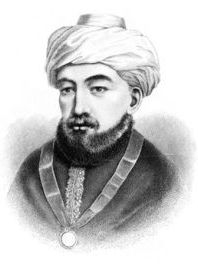Fuente: Mishné Torá, «Las leyes de los reyes y sus guerras» (capítulo 11).
Frases célebres de Maimónides
La cruz, en la que las religiones de la cristiandad alegan que fue ejecutado Cristo (aunque otras religiones afirman que fue en un madero), se considera el símbolo preeminente del cristianismo. Algunos religiosos hasta se inclinan ante ella y la besan. Entre los judíos, después de su restauración de Babilonia, el madero en el cual un hombre había sido ejecutado se consideraba detestable y símbolo de maldición, algo que habrían de enterrar para no verlo.
Comentario sobre el Mishnah, Avot 4.5.
Cuando los rabíes convirtieron su posición en una ocupación asalariada, hubo quienes alzaron su voz en protesta. A diferencia de estos rabinos, Maimónides trabajó arduamente como profesional de la medicina para mantenerse, y nunca aceptó remuneración económica por sus servicios religiosos.
Fuente: Mishné Torá, «Leyes de idolatría», capítulo 11; compárese con Levítico 19:26 y con Deuteronomio 18:9-13).
The Guide of the Perplexed, de Maimónides; traducción por Shlomo Pines. University of Chicago, 1963 http://www.cirp.org/library/cultural/maimonides/ (en inglés)
“Es mejor y más satisfactorio liberar a mil culpables que condenar a muerte a un solo inocente.”
Sefer Hamitzvot
Fuente: El libro de los mandamientos.
Fuente: Edición en inglés de Charles B. Chavel (1967); esta cita también aparece en el libro Defending the Human Spirit: Jewish Law's Vision for a Moral Society (2006), de Warren Goldstein, pág. 269.
Maimónides: Frases en inglés
Fuente: Guide for the Perplexed (c. 1190), Part III, Ch.26
Fuente: Guide for the Perplexed (c. 1190), Part III, Ch.10
Ezek. ix. 9
Fuente: Guide for the Perplexed (c. 1190), Part III, Ch.17
“An artisan busies himself with his work for three hours each day and spends nine hours in study.”
Treatise 3: “The Study of the Torah,” Chapter 1, Section 12, H. Russell, trans. (1983), p. 52
Mishneh Torah (c. 1180)
Fuente: Guide for the Perplexed (c. 1190), Part III, Ch.12
Fuente: Guide for the Perplexed (c. 1190), Part III, Ch.29
Fuente: Guide for the Perplexed (c. 1190), Part III, Ch.17
Fuente: Guide for the Perplexed (c. 1190), Part III, Ch.20
Fuente: Guide for the Perplexed (c. 1190), Part III, Ch.17
Fuente: Guide for the Perplexed (c. 1190), Part III, Ch.20
Fuente: Guide for the Perplexed (c. 1190), Part III, Ch.20
“Teach your tongue to say "I do not know" and you will progress.”
This is actually from the Talmud (Tractate Berachot 4a)
Misattributed
“God's knowledge extends to things not in existence, and includes also the infinite.”
Fuente: Guide for the Perplexed (c. 1190), Part III, Ch.20
Treatise 4: “Idolatry,” H. Russell, trans. (1983), p. 74
Mishneh Torah (c. 1180)
Fuente: Guide for the Perplexed (c. 1190), Part III, Ch.11
Fuente: Guide for the Perplexed (c. 1190), Part III, Ch.17
Fuente: Guide for the Perplexed (c. 1190), Part III, Ch.8
Fuente: Hilkhot De'ot (Laws Concerning Character Traits), Chapter 2, Section 7, p. 33
Fuente: Guide for the Perplexed (c. 1190), Part I, p.106 (1881) Tr. Friedlander
Treatise 3: “The Study of the Torah,” Chapter 1, Section 8, H. Russell, trans. (1983), p. 51
Mishneh Torah (c. 1180)
Fuente: Guide for the Perplexed (c. 1190), Part III, Ch.8
(Ps. lxxxii. 6) This is man's task and purpose.
Fuente: Guide for the Perplexed (c. 1190), Part III, Ch.8
Fuente: Guide for the Perplexed (c. 1190), Part III, Ch.12
Fuente: Guide for the Perplexed (c. 1190), Part III, Ch.20
Maimonides provides examples here from (Ps. cxliv. 4), (Job xxv. 6 & iv. 19) and (Isa. xl. 15).
Fuente: Guide for the Perplexed (c. 1190), Part III, Ch.12
Fuente: Guide for the Perplexed (c. 1190), Part III, Ch.8
Fuente: Guide for the Perplexed (c. 1190), Part III, Ch.6
